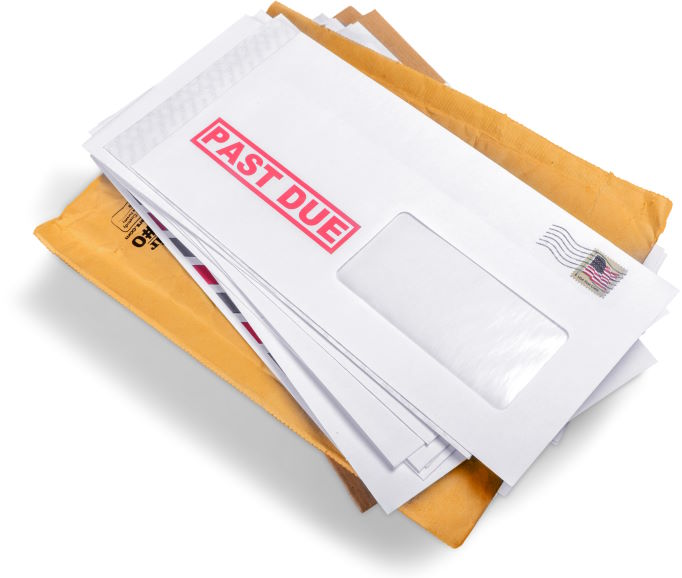Claiming from a tenant’s deposit – Part 1
Building on our article last month on deposit protection requirements, this article will consider what a landlord can make a deduction from a residential tenant’s deposit for.
A landlord usually requires a tenant to pay a sum of money to them called a tenancy deposit, which in the simplest sense, acts as a form of insurance for the landlord. If a tenant meets the terms of their tenancy agreement and leaves the property in the condition it was let to them in, they can expect to have the deposit returned to them at the end of the tenancy. If not (for instance if the tenant breaches the terms of the tenancy agreement, causes damage to the property, or falls into rent arrears) the landlord can look to be reimbursed by the deposit, by making a deduction or claim from it.
Common deductions include where a tenant has caused damage, damaged or removed contents, returned the property in a worse condition than when it was let to them in, left unwanted belongings behind at the end of the tenancy, or fallen into arrears. Each of these will be explored in more detail below.
As the deposit belongs to the tenant it should be returned to them without deduction at the end of the tenancy unless the landlord has a claim to all or part of the deposit. It is important to note that much of the landlord’s ability to claim on the deposit depends on the specific tenancy agreement but below we will explore the more common circumstances in which a landlord may or may not choose to make a claim against a tenant’s deposit:
If the tenant has fallen into arrears of rent
The landlord can make a claim against the tenant’s deposit to cover rent arrears. The tenant will be responsible for paying rent until the tenancy legally ends, and when this is will be dictated by the tenancy agreement – but this could be when the fixed term ends and the tenants vacate, or when a tenant’s ‘notice to quit’ is given and observed.
If the rent arrears exceed the amount of the tenant’s deposit, or if the arrears plus the value of any other claim the landlord has exceeds the amount of the deposit (for instance if there are arrears plus damage) the landlord will have to claim the deposit and then decide whether to make a court claim against the tenant for the remainder.
If the tenant has failed to pay their bills
The landlord can only make a claim against the tenant’s deposit for unpaid bills if this has cost them. So, if the agreement is that the landlord pays the bills and the tenant reimburses the landlord for the same but the tenant fails to do so, then, the landlord would have a claim against the tenant’s deposit for unpaid bills. Usually though, a tenant will contract with the utility companies themselves, in which case, the landlord will not have suffered any loss if the tenant fails to pay (as the debt will be owed by the tenant to the company) and therefore the landlord will not be able to claim in this case.

The standard of cleaning required
At the end of the tenancy, the landlord can expect their tenant to return the property to them in a condition as clean as it was when the tenancy began save for general wear and tear, and for rubbish to have been removed. The landlord will not be able to claim from the deposit for cleaning to a professional standard unless this was the standard when the tenant moved in, and the landlord cannot require the tenant to pay for professional cleaning at all.
The position with decoration
The position with decoration is not entirely straightforward due to the concept of wear and tear. So, starting with the clearest cases of decoration – a landlord may have a claim against the tenant’s deposit if, without the landlord’s consent, the tenant redecorated or made significant changes such as painting walls a different colour, wallpapered or changed the flooring, if it means that the landlord must redecorate again before new tenants move in – even if the tenant believes they have actually improved the property with those changes. With wear and tear though, a landlord cannot claim from the tenant’s deposit for fair wear and tear, even if the property requires decorating after the tenant vacates. Wear and tear is unavoidable damage that happens over time as a result of reasonable use of the property and which is part and parcel to everyday life – it is therefore something a landlord should expect, it includes scuffs on walls, ageing furniture and tired, worn flooring, a landlord cannot claim from a tenant’s deposit for this.
In the case of damage
In terms of damage, a landlord may have a claim against the tenant’s deposit if the tenant causes or allows damage or accidental damage to the property. Such damage may include holes in walls, smashed windows, stained or burned carpets, broken furniture, graffiti, and condensation damage or mould if this has been caused by the tenant for instance by allowing the property to be over-occupied or from failing to heat and ventilate it appropriately.
Tenants have a responsibility to treat the property in a ‘tenant-like manner’. That said, a tenants deposit cannot be deducted from for damage or disrepair that is a landlord’s responsibility. Landlords are legally required to comply with their repairing obligations during a tenancy and so deductions cannot be made in respect of all repairs, or maintenance to which the landlord is responsible.
If there are missing items at the end of the tenancy
If any of the landlord’s contents are missing at the end of the tenancy, say the tenant has removed them at some point during the term or taken the contents with them upon vacating, then the landlord can look to claim from the tenant’s deposit to cover the cost of like for like (in age and quality) replacements. How much a landlord can claim will be discussed further, in one of my upcoming blog posts.
If the tenant has breached the terms of the tenancy agreement in another way
In the event that the tenant breaches the terms of the tenancy agreement, for instance by smoking in the property or by keeping a pet when the tenancy agreement does not allow this, the landlord will only have a claim against the tenant’s deposit if the breach causes the landlord to suffer a loss, e.g. if additional cleaning was required due to the tenant smoking indoors or if the pet caused damage. The landlord cannot claim from the deposit just because the tenant breached the tenancy agreement
In summary – what should landlords keep in mind?
Landlords should be alert to the fact that the tenant’s deposit belongs to the tenant; until such time that the landlord can justify a claim from it, and that the burden of proof is on them as the landlord to evidence their claim.
How much a landlord can claim in each of the above cases will be explored in part 2 of this blog, next month.
As the burden of proof to evidence the claim is on the landlord, it is important that landlords keep appropriate records to prepare for any deposit deduction related dispute – how landlords can best prepare and the process for making a claim will be covered in part 3 of this blog, coming at a later date.
When giving comment and advice on a non-specific basis, Boyes Turner cannot assume legal responsibility for the accuracy of any particular statement. In the case of specific problems it is recommended that professional advice be sought.
About Boyes Turner
* * *
Would you like to receive our monthly Newsletter?
Sign-up for our monthly Newsletter for helpful articles and regular industry updates. We promise not to spam you with hundreds of emails and you can unsubscribe at any time.


